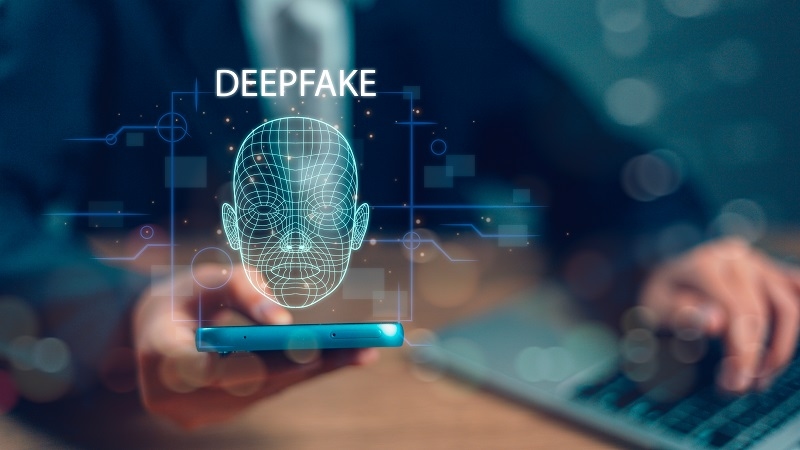
The proliferation of AI deepfakes online poses trust problems that are no longer a future threat—it's the present-day digital crisis. We see within the first 100 words alone how deepfake detection software has become a necessity in fighting forged media, and how ethics diverge regarding AI-created video ethics. From elections to marketing influencers, no part of the internet is spared by these deceptive products. As technology evolves, the distinction between authentic and artificial becomes increasingly blurred, presenting the challenge of redefining how trust can be built online for both the users and the platforms.
Deepfakes and AI-generated media employ machine learning to make hyper-realistic representations, images, audio, or videos of individuals uttering or engaging in statements or activities they never made or did. What was initially academic research and artistic experimentation has now grown into an international issue. With the use of GANs (Generative Adversarial Networks), it is easy for anyone possessing simple computing capabilities to produce realistic counterfeit material mimicking celebrities, politicians, or even ordinary people.
The ramifications are significant. Misinformation, hoaxes, revenge postings, and other violations or harms are growing more malicious & have made social platforms & legislators reconsider their policies for content moderation.
Trust is the base & building block of any type of online communications. Whether one accepts a video endorsement, reads news from an online news agency, or views a live feed—users instinctively believe what they see. But the presence of AI-made content is quickly undermining that foundation.
Imagine how deepfakes have altered political speeches, created celebrity endorsements, or disseminated fake information amidst international events. Such fakes do not only misrepresent reality; they instill users distrust digital content, leading the masses to doubt even genuine sources. Such loss of trust can be perilous in a time when individuals heavily depend on digital sources for real-time updates.
As a result of the growing threat of AI-generated disinformation, cybersecurity professionals and technology creators are developing deepfake detection software USA that scans digital content for irregularities. The software uses reverse-image searching; audio waveform analysis; mapping motion of the face; and analyzing frame-by-frame to find anomalies, which sometimes can't be seen with the naked eye.
Major tech companies and startups are investing in this arena. Microsoft's Video Authenticator, MIT's Detect Fakes project, and Deepware Scanner are a few examples trying to flag or prevent malicious content from spreading online.
The issue is that with the arms race between deepfake creators and those seeking to hinder them, as detection technology advances, so do creation techniques—oftentimes becoming more advanced and more difficult to identify.
The ethical implications of AI-generated videos extend well beyond just misinformation. These technologies can serve useful purposes in satire, entertainment, education, or art, but without any transparency and consent policies are dangerously close to parallel black and white approaches for creators.
Consent is usually an overriding concern when it comes to video, but in this case where a person’s likeness or voice could be used without permission- even if altruistic- opens the floodgates for legal and ethical considerations. Depending on how the imagined content has been presented to the AI, characters could be made to represent actual people in an exploitative, damaging nature. In these instances, reputational or mental health harm is entirely possible.
Media institutions, media organisations and influencers need to establish agnostic rules with regard to their moral or legal considerations here, especially with fresh Snapchat and TikTok collaboration or exploration ideas!
The response of online spaces to this growing threat has been inconsistent. Social sites' deepfake policy extends from blanket bans to generalized community guidelines. Facebook has been uncompromising when it comes to banning deepfakes that deceive users, while Twitter marks deceptive media but does not consistently remove it.
YouTube and TikTok continue to hone their craft, tending to permit content identified as deepfake if it's been tagged as mainstream parody or satire. The lack of mainstream consistency confuses and leaves both creators and users uncertain about what is acceptable.
Regulators and governments are starting to wake up, enacting bills to regulate dangerous content. Enforcement, however, remains difficult, particularly across borders.
In today's digital environment, user skepticism of digital content is as much an issue as a defensive mechanism. While skepticism promotes critical thinking, it also implies audiences tend to disbelieve actual events, genuine testimonials, or true warnings.
This new reality has elevated the importance of content creators, journalists, and educators even more than before, making authentication more difficult to verify. Transparent editing habits, verified sources, and third-party fact checking are no longer luxuries, but best practices.
For brands and companies in particular, greater trust must be fostered between their viewers. This can be done through confirmed content, behind-the-scenes information, and regular messaging. Honesty has become the greatest currency in the trust economy.

With increasing skepticism, AI content verification techniques are becoming the necessity of choice for platforms and consumers. Some examples include:
Currently, startups, technology firms, and other firms are competing to provide these utilities. Truepic and Amber Video are companies, for example, that provide verification products that are designed to safeguard the content's digital integrity for a picture or video. These products also provide an opportunity for the user to verify the authenticity of content before they consume or share.
Education is a powerful tool in the battle against deepfakes. Awareness campaigns can educate users on how to spot fake content, as well as understand the online trust concerns associated with AI deepfakes. Education should take place in formal settings like schools, colleges, or community groups, and take place through digital literacy.
Workshops and information sessions held by cybersecurity companies or fact-checking organizations are another option. Knowing that AI can create and manipulate content leads users to understand and challenge what they see online.
In the U.S., legislators are finally beginning to wake up and realize the danger. There are bills such as the DEEPFAKES Accountability Act being tabled to enforce AI-generated content labeling. State-level actions, such as California's banning misleading deepfakes within 60 days of an election, are starting to gain traction as well.
Yet, regulation needs to tread a thin line. While preventing abuse is crucial, it should never inhibit creative freedom or scholarly inquiry. Good laws need to look at intent, context, and consent instead of merely the usage of technology.
Governments also need to act internationally, as the internet has no geographical boundaries. Treaties between countries and partnerships in technologies could help create global norms for authentication and responsible use of AI.
As technology becomes even more advanced, we can speculate on a couple of trends for the next decade:
While the landscape is vast, the combination of public education, good technology, and transparency around policy allows for the potential of a revived trusted context online.
AI deepfake online trust is pervasive. From news to entertainment and everything in between, AI-created content is leading the world to rethink what it can trust in digital media. While there is a logic for optimism with deepfake detection technology USA, better processes for AI content verification, and awareness of ethical AI-generated video principles, there is a long road ahead to revive a trusted context online.
Digital trust needs to form from transparency, verification, and diligence. As creators, platforms, and consumers change, the only way forward is through accountability, education, and innovation. Only then can we navigate the ambiguous space between real and fake—and restore trust in our digital world.
This content was created by AI